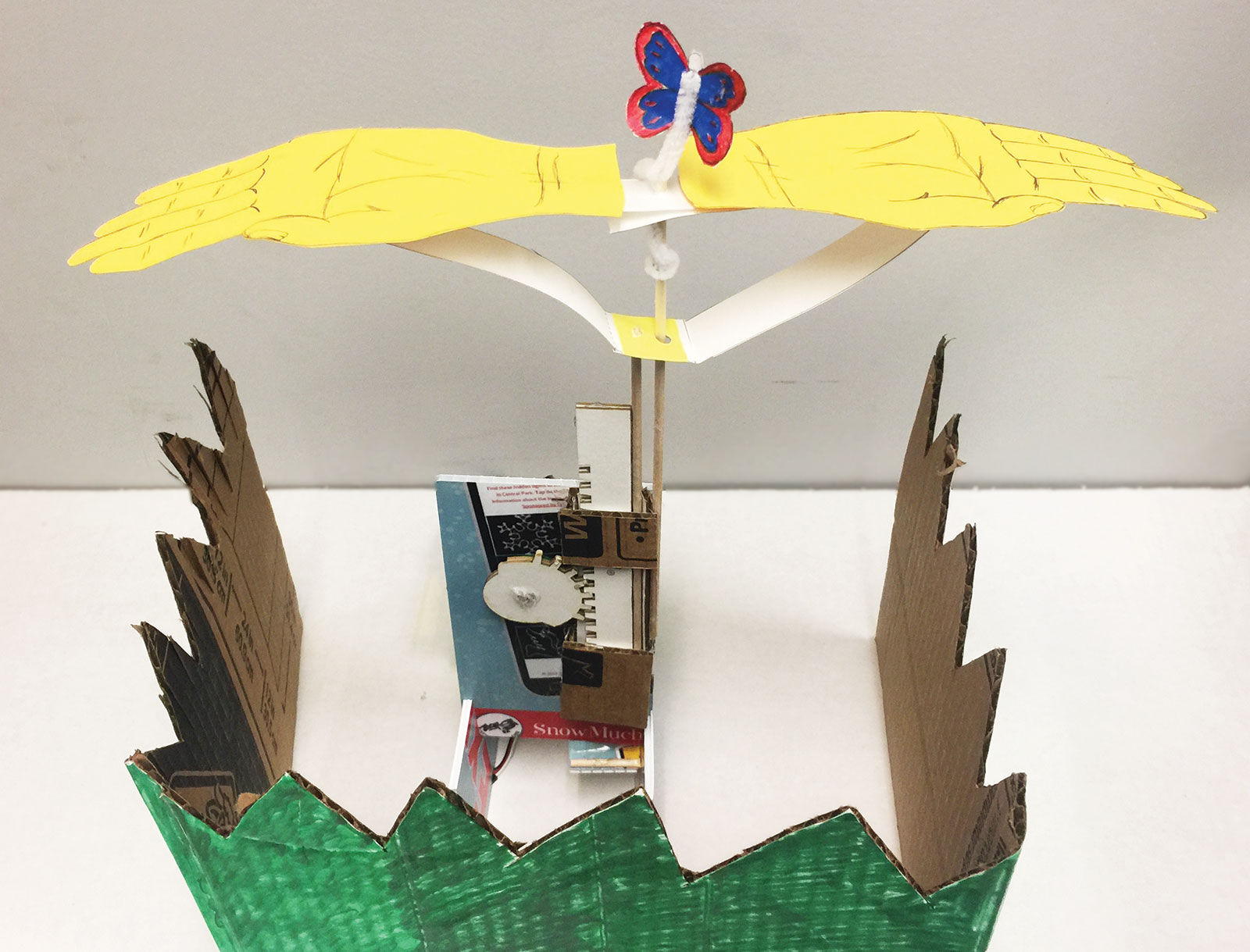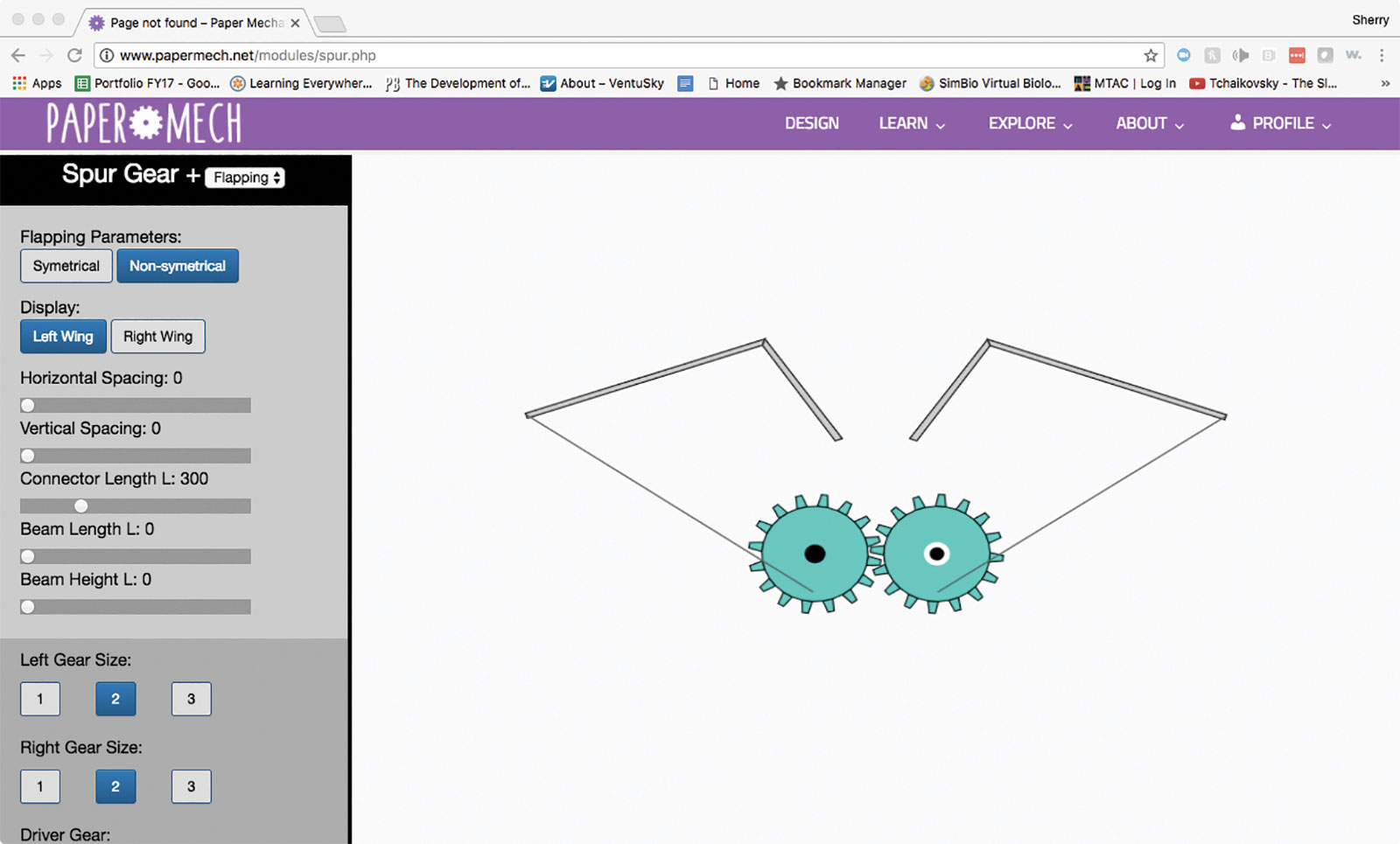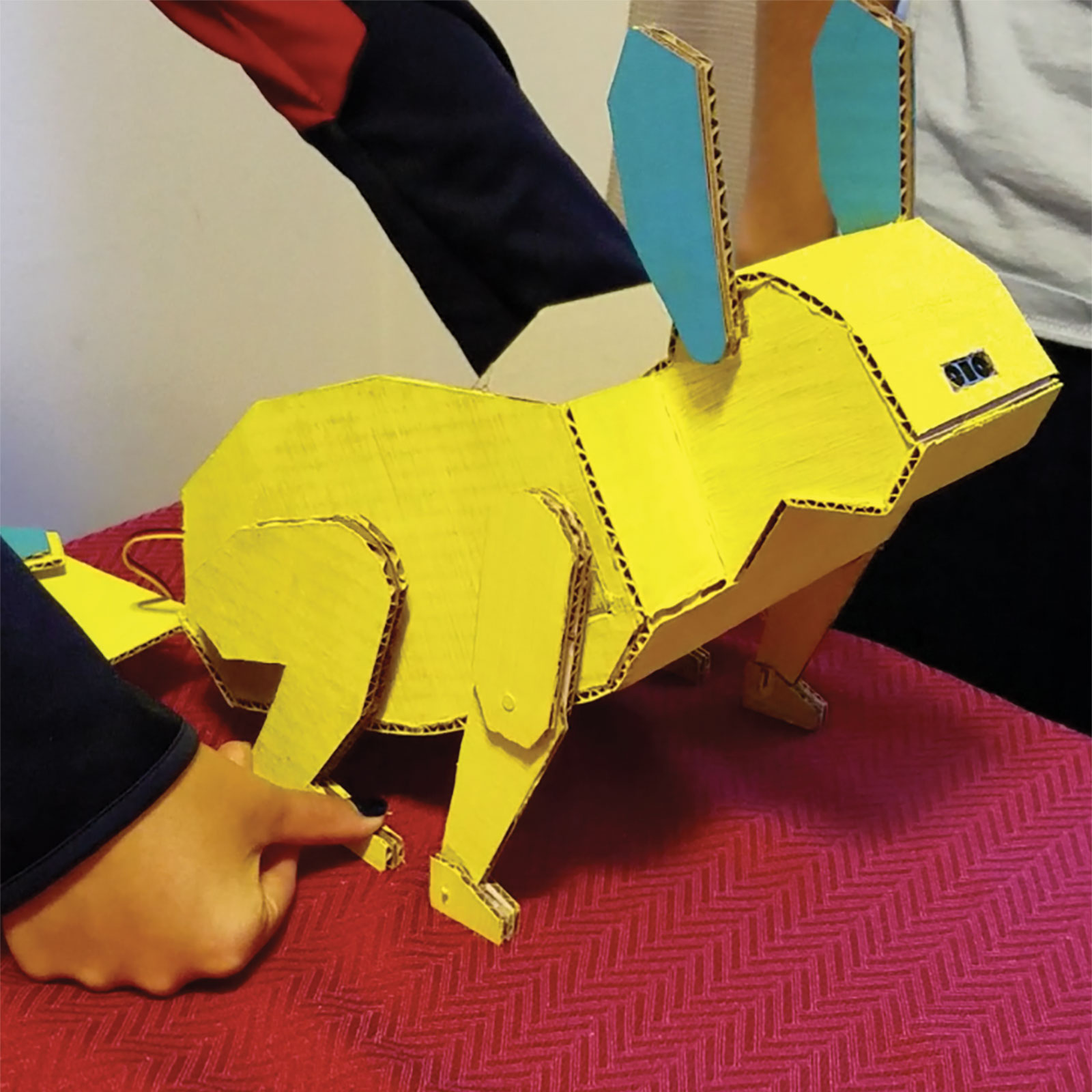Paper Mechatronics: A Case for Craft-based Engineering Education
When artists select a medium with which to create their work, the medium is both the material and the tool used to express their idea. In improvisational dance, for example, the physical space, the dancer, and the dancer’s movements together form the creative medium with which to design their performance. Malcolm McCullough argues in Abstracting Craft that computation, like traditional craft media, is a creative medium. Computation can be crafted and shaped by one’s hands in a tangible way beyond typing into a computer keyboard.

Inspired by this notion of a computationally enabled medium, we are exploring a new learning medium that melds craft and computation. We use the term Paper Mechatronics to describe the integration of mechanical, computational, electronic, and artistic techniques with children’s papercrafts. This emerging genre results from the blending of familiar craft materials with embedded sensors and computational elements. With Paper Mechatronics, children create objects that can be animated with light, motion, sounds, sensors, and cameras, using Arduinos and other microcontrollers. The goal is to engage children in creative design and engineering education.
Funded by the National Science Foundation, Paper Mechatronics aims to provide an extensible approach and kit that incorporates both “high” and “low” technological elements, along with learning resources that can meet the needs of novice designers and appeal to the interests and abilities of a wide range of learners. The design marries the inherent approachability and flexibility of everyday materials with graduated pathways into mechanical and computational complexity.
Simple craft materials—construction paper and scissors—provide familiar starting points for learners young and old. These materials can then be progressively augmented and enriched with a variety of “smart” computational and electronic elements. For example, a learner can cut paper or cardstock, use conductive tape to fasten an electric circuit to a motor and switch, then attach a small programmable chip to tell the motor to make the paper “come alive” (Figure 1). Paper Mechatronics is intended to span disciplines to allow learners to generate their own narratives about their work and themselves. Through tinkering with tools and materials, learners develop skills in designing, planning, and problem solving.
The process of creating objects with this medium, scaffolded by powerful but low-threshold design software, provides accessible entry points into engaging, personalized projects that place learners at the center of an engineering design process that deepens over time. Our research posits that the intentional design of inclusive pathways using Paper Mechatronics can support the development of adaptive expertise and provide inviting on-ramps to engineering practices and pursuits.

Rationale for paper and cardboard
Paper Mechatronics builds on a tradition of creative and expressive papercrafts. For well over a century, papercrafts have been a staple of children’s constructive work with origins as early as the first century AD in China and later Japan with paper folding and paper cutting. In the early 1800s, Friedrich Froebel included paper folding and cutting activities in his development of the kindergarten system; and even before Froebel, in the late 1700s, some children’s books included flaps or cut-out pieces. In the last half-century this genre of work has blossomed in a variety of directions and educational domains.
Paper and cardboard are ubiquitous materials that can be cut, shaped, painted, and decorated. This craftability allows learners to use everyday materials to express an idea or tell a story, then build a tangible model of that idea. With the addition of robotic components, the model becomes interactive and animated.
One pathway for creating a Paper Mechatronics project begins with a webbased parametric design software tool called FoldMecha.* With this software, learners experiment with different motions and change sizes and relative lengths of various mechanisms (Figure 2). FoldMecha then generates a PDF blueprint ready for cutting. Younger learners who have difficulty handling tools can use plastic cutting knives and pre-cut gears. Small electronic pieces can be replaced with larger versions or with commercially available controllers and motors.
Paper Mechatronics aims to not only engage learners in constructing and assembling activities invented by others, but to use a design project as a context for teaching and learning the underlying principles involved in mechanical movements, coding, and electronics. Creative engineering can be supported by foregrounding or hiding aspects of the design and construction process from children. Instructors can choose to focus on aspects such as mechanical design, robotics and programming with sensor control and feedback loops, breadboarding electronics, artistic expression, or creative exploration.
Promoting equity
Though computational tools have become increasingly ubiquitous in both daily life and education, differences in where and how these tools are used persist. For example, while access is growing among groups of students, more affluent students are given greater opportunities to use high-tech tools more expressively and creatively, and STEM learning in schools remains disconnected from the interests and concerns of large numbers of students. Young women and students of color remain underrepresented in STEM fields in higher education and careers.
The high-low mix supported by Paper Mechatronics has the potential to address some of the factors that have contributed to these disparities. Paper Mechatronics can support a wide range of learners as they move from intuition, experience, and curiosity into disciplinary technologies and practices. The design projects appeal to all genders with an extraordinary variety of interests and backgrounds. In particular, three features foster more equitable learning:

Materials are low cost and readily available. Barriers to using Paper Mechatronics in creative and personal ways are low: educators and youth do not need expensive equipment or specialized expertise to begin designing and building. This accessible entry allows learners to capitalize on what they already know and have at hand.
Tools are highly flexible. The tools straddle art studio and engineering lab and scale from playful experimentation to an in-depth exploration of computation and mechanical design. Combining paper with new computational media helps demystify blackboxed devices, provides an entrée into tinkering with tools and seeing how things work, and allows young people to build objects and stories that are creative and personal.
Artifacts are easily sharable. Learners’ creations can be shared across settings and backgrounds, giving them a chance to display their products and growing expertise to parents, mentors, and peers, regardless of technological fluency or access.
In collaboration with the University of Colorado Boulder’s Craft Technology Lab and the Children’s Creativity Museum in San Francisco, we have begun designing a set of computational tools, learning resources, and materials, and testing them with youth, teachers, and adults with a range of backgrounds in design (Figure 3). Capturing a spirit of play and tinkering, our workshops engaged learners who had no previous experience in mechanics and electronics. The activities allowed learners to build passionate and personal stories from their own strengths and interests.
* FoldMecha was designed by HyunJoo Oh, a Ph.D. candidate at the University of Colorado Boulder.
Sherry Hsi (shsi@concord.org) is Executive Vice President of the Concord Consortium.
Colin Dixon (cdixon@concord.org) is a research associate.
This material is based upon work supported by the National Science Foundation under grant IIS-1735836. Any opinions, findings, and conclusions or recommendations expressed in this material are those of the author(s) and do not necessarily reflect the views of the National Science Foundation.

